
























































www.echo.net.au/sustainability
Editor: Aslan Shand
Contributors: Belle Budden, Aiden Grandsimon, Dr Sian Grigg, Dr Willow Hallgren, Jo Immig, David Lowe, Mandy Nolan, Aslan Shand
Advertising team: Anna Coelho, Jacki Coward, Lesley Hannaford, Nicole Hargreaves, Kate Messenger, Katie Thompson,
Design & production: Ziggi Browning, Tamsin Smyth
Front cover design: Tamsin Smyth
© 2025 Echo Publications Pty Ltd • ABN 86 004 000 239 64 McGoughans Lane, Mullumbimby NSW 2482 • 6684 1777
Printed on recycled paper
Some Sustainability 2025 highlights:
▶ Smart tech for a hot planet: how AI is powering climate actionp5
▶ Why are nuclear reactors illegal in Australia?p6
▶ Achieving a sustainable future for logging and timber productionp12
▶ Reclaiming our sustainable future – be regenerativep14
For over 25 years, Rainforest Rescue has been on a mission to protect the under-protected rainforests of Australia. Now, we must focus on increasing the resilience of fragile habitat as extreme weather and invasive species threaten Nature’s future.
Your involvement matters more than ever, as we work together in fighting the climate and biodiversity crises for a brighter future. Thank you for your generous ongoing support.
Discover how rainforest action is biodiversity and climate action at: rainforestrescue.org.au
Aslan Shand – editor
There is no doubt that the future will challenge us all in ways we don’t expect, particularly when it comes to a changing climate.
We are already seeing the impacts of climate change locally with floods, fires, and droughts, as well as globally with unprecedented fires and flooding around the world in recent years.
Temperature records continue to be topped again and again, with the global average temperature for the most recent ten-year period, from 2014 to 2023, estimated to be the warmest tenyear period on record according to the United Nations.
The science is clear that the changes we are seeing are a result of human activity from cutting down trees to the burning of fossil fuels.
According to NASA’s Earth Observatory, ‘air temperatures on Earth have been rising since the Industrial Revolution’.
‘According to an ongoing temperature analysis led by scientists at NASA’s Goddard Institute for Space Studies (GISS), the average global temperature on Earth has increased by at least 1.1° Celsius since 1880. The majority of the warming has occurred since 1975.’
At the Earth’s north and south poles this temperature rise is happening at a faster rate than the global average.
The Arctic, the north pole, has warmed by approximately 3°C in the past halfcentury due to ‘arctic amplification’. This is primarily caused by the melting of sea ice which exposes darker ocean water and therefore increases the absorption of solar energy rather than reflecting it. This in turn is leading to higher temperatures, that in turn leads to glaciers and ice sheets melting and adding water to the ocean and therefore higher sea levels with global average sea levels having risen 21–24 centimetres since 1880. As part of the continuing cycle this then leads to more frequent and intense severe weather events as we’ve seen locally and globally.
Action is needed, now. It is not just the action of individuals, it is the action of nations and action globally that is needed. It is no one thing that any person or government can do that will halt climate change, it is the myriad of actions that we take collectively that will create change, reduce emissions and ensure that there is a planet that humans can inhabit.
Humans are capable of extraordinary achievements and it is this that we must all tap into to


push forward to create change. It is every tree planted, it is every choice we make not to burn fossil fuels, it is every vote we cast that makes a difference. It is our story, we are the ones creating it as we take every significant and insignificant action in our lives.
The science is clear, the actions we need to take to cut climate changing emissions are there – some more palatable than others – the question is how are we going to encourage each other and our governments to make the changes we need to for a better future for ourselves and those we have brought into this world?
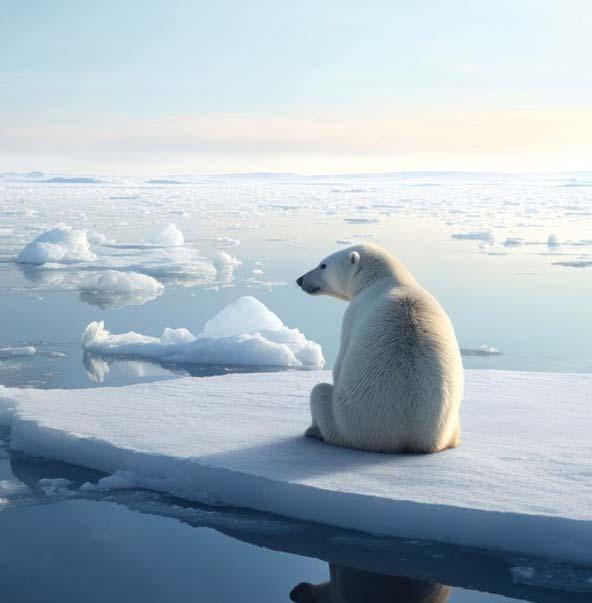

Dr Sian Grigg
Al Gore was in Paris two weeks ago. Me too. I was excited like a fan girl – and reminded of my age – those younger than 40 had no idea who I was talking about. It is 25 years since Gore lost the US presidential election to George W Bush. How different the world might have been. While Iraq and Afghanistan no longer dominate headlines, Ukraine, Gaza, wild weather and record temperatures now compete with crazy pronouncements from the White House. Was 2000 a turning point? Could Al Gore’s election have led us into a brighter and more sustainable future? We will never know, but as the elders say, the best time to plant a tree is 25 years ago; the next best time is now.
Al and I
In any case, from 28-30 March both Al and I were in Paris for the Climate Reality Training. He was running it, I was participating (along with 800 others, including my 23-year-old son). It is ten years since the historic Paris Agreement aiming to limit global warming to 1.5°C. I guess Al, me, and everyone else were asking ourselves the same question: what do we do now? Now that the planet has already warmed by 1.5°C . Since 2000 Gore has built an
organisation giving climate activists the basic science. Following the logic that if people understand the science, they will act accordingly. This is a battle I’m sure he thought could be won in 25 years. It is clear the battle is far from over.
Despite all this the enthusiasm in the room beneath the Louvre was palpable. Day one, subdued and serious, people sat through an overlong presentation of the state of the climate today (Al is a confirmed science nerd). Day two there was cheering, wolf whistling, and standing ovations for climate negotiating heroes Christiana Figueres and Laurence Tubiana. By Sunday morning it felt like a huge climate mass. Filled with hope that the exponential curve of solutions (huge investment in renewable energy, the Exponential Roadmap for Natural Climate Solutions) can catch and outpace the exponential curve of destruction (while coal burning has plateaued, oil and natural gas consumption continue to rise).
It’s not just about science
A partial answer to our collective question became clear. Since 2015 behavioural scientists have shown that it is not about the hard science, i.e. the physical reality. Things now rest on the human sciences,
the so-called soft sciences. It sounds easier (no maths) but it’s actually really difficult. Even when we understand the physical science, why can we not divert ourselves from the trajectory that sends us off the cliff? The human brain is an extraordinarily skilled denial machine .
Cognitive dissonance is possible for a long time

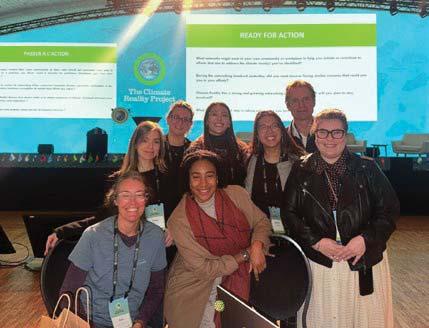
The world is too complex for us to take it all in, so we’ve become experts at taking the bits we need to survive and make our way (with a big emphasis on improving or maintaining our social status).
The job of saving the planet now lies with the sociologists, the psychologists, and the political activists. And perhaps the green marketing experts, who combine all this to encourage action from us individually, that will then spur the collective. How to encourage the ultimate social animal, individually and collectively, into planet positive action?
Doom and gloom do not spur action, merely denial or despair. Hope that the battle can be won is what really engages people. That can be fuelled by focusing on all the extraordinary things that are already happening. The exponential curve of solutions. And by joining the fight, not just individually as I have always done, but collectively. That was the big takeaway from Paris 2025. I’m now officially an activist who is joining a group.
Saviour Trump?
Bizarrely the Trump administration may be an unlikely contributor to slowing or pausing the growth of greenhouse gas emissions. There
have been two pauses in the last 25 years. One following the 2008 global financial crisis (GFC), and the second in 2020-2021 during Covid. Economic growth is the main driver of emissions growth, and Trump’s tariffs may be as big a shock to the world economy as the GFC and Covid. Might Trump be nature’s way of forcing us to slow down?! Truly a mind-bending thought.
■ Dr Sian Grigg: PhD Macquarie University 2000-2005. Dr Grigg studied the development of a simple ocean-atmosphere-sea ice model of the Atlantic Meridional Overturning Circulation (AMOC) to investigate long -term climate variations.
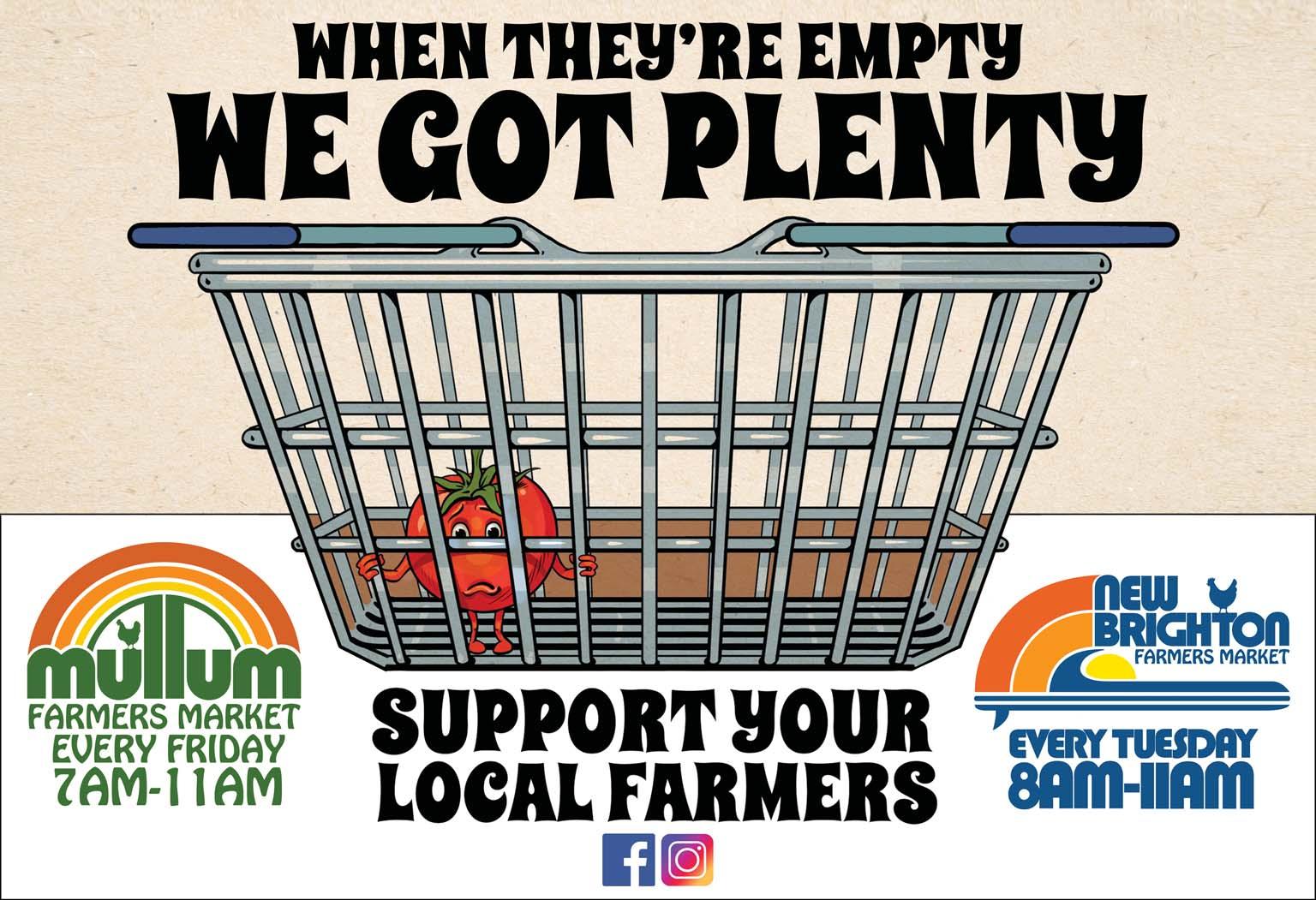
Aslan Shand
There is a real need for housing that is affordable, but there is also an essential requirement to create housing that reduces climate emissions.
The global ‘building value chain is responsible for 37 per cent of total carbon emissions’ according to World Economic Forum (WEF) and Boston Consulting Group (BCG) and the industry needs to press forward with a wide range of initiatives and ways to reduce emissions that impact climate change. This means that action needs to be taken both globally and locally to ensure that the need for housing and construction is met whilst not driving up emissions.
‘The most obvious and immediate area of impact is in the way we design and construct our buildings. The materials we use matter, as does where they come from and how they are implemented in the built environment,’ says the WEF and BCG.
From recycling materials from the construction industry, looking at new materials and ways to build, to where we build, and building for the future changing environment
it is important to look at the whole cycle from construction to destruction of housing.
Recycling materials from existing construction sites is a significant challenge and needs government support to facilitate effective regulations to ensure the safe use of recycled materials as well as ensuring recycled materials can efficiently reenter the construction system.
Another key element that needs to be considered in recycling of building materials is the distance they travel from their source site and the level of processing that is required for them to reenter the construction process. The less resources needed to transport and process recycled material, the more effective the reduction in climate emissions.
The 2022 article by the European Union on ‘Recycling residential building materials: opportunities and limitations’, highlights that improvements in collection and recycling ‘could enable greater use of materials from reclaimed sources in the future’.
‘They report that a combination of accelerated decarbonisation and urban mining could lead to a 40 per cent reduction in greenhouse gas emissions by 2050’.
Looking for new or alternative materials and how they are being processed and utilised is an area of growning innovation. The use of 3D printing and hempcrete are just some of the innovative ways to approach building and construction that are being explored.
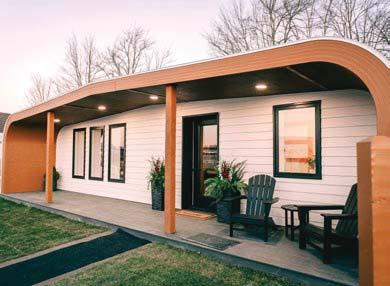
The BioHome3D is one example of a 3D printed home that has been developed by using wood waste with corn starch to create pellets that can then be used to print a home.
According to the ABC researchers at the University of Maine’s Advanced Structures & Composite Center they are looking to use the 1 million tons of woodwaste from sawmills in Maine to produce a 100 per cent renewable house. The house can be broken down and turned back into pellets to be reused.





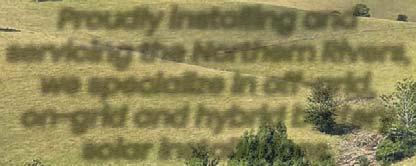


The importance of using local materials is a key part of reducing climate emissions and for a region like the Northern Rivers, products that utilise mud to hemp are potential game changers.
President of the Legalise Cannabis Australia Party (formerly HEMP) and Nimbin HEMP Embassy, Michael Balderstone has highlighted the potential use of hemp in the building industry in the Northern Rivers and is encouraging locals to engage with the draft NSW Hemp Industry Development Plan that is open for feedback via the Have your say website until Monday, May 19, 2025.
‘I think we should be exploring hemp housing which has huge potential for our country as it has terrific fire-resistant qualities,’ Mr Balderstone said.
‘Currently, most hemp houses built in Australia are made from imported hemp, the same as most of our medical cannabis is imported.
‘Our climate is perfect for growing all types of cannabis which loves the sun and needs a lot less water than other crops like cotton. I don’t know of one mill in the country that processes hemp into cloth for example. The potential for high protein hemp seed production is another industry still in a fledgeling state.’


Sustainable House Day
Coming up on May 4 and 5 is Sustainable House Day (SHD) that looks at housing across the country that utilises a range of sustainable materials as well as building practices that ensure the housing is resilient in the face of local conditions such as floods, and the local environment.
Sasha Mainsbridge from Mullum Cares is both opening her house as part of Sustainable House Day and presenting on a SHD panel talking about resilient rebuilding.
According to a recent report At Our Front Door by the Climate Council Ballina, and Tweed Heads South, are becoming the most uninsurable places in NSW.
‘If you own a home on a groundlevel slab in low-lying areas of the Northern Rivers, I urge you to come to my open home tour as part of the SHD program,’ said Sasha.
Changing the way we tackle construction, at an individual and industry level, is a key part of how we move forward with sustainable housing and reducing climate emissions with a whole cycle approach being needed to account for all the costs in the building construction cycle.








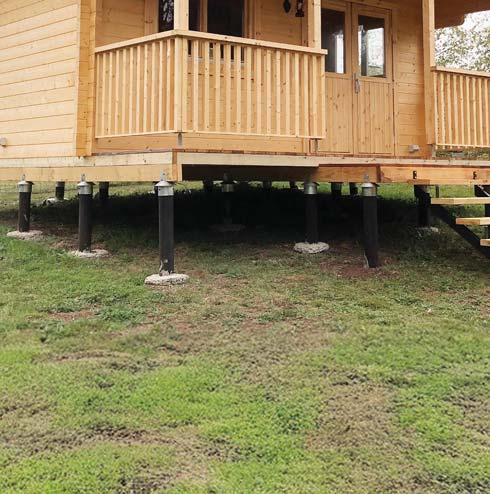

Dr Willow Hallgren
As the impacts of climate change crash down around us – megafires, record floods, brutal heatwaves – it’s easy to despair. But amid the climate chaos, a new and potent ally has emerged: Artificial Intelligence (AI).
AI, simply put, refers to computer systems that can mimic human intelligence – learning from vast amounts of data, spotting patterns humans miss, and making lightning-fast decisions. No longer science fiction, AI is now helping us understand, predict, and even fight back against climate change in myriad ways. And while it’s no silver bullet, its role is growing more important with every passing year.
In Australia, where bushfire seasons have become a terrifying, almost annual trauma, scientists at the University of South Australia have developed AI that can detect smoke from space (https://tinyurl.com/ uccwae9u). Normally, satellite images are slowly beamed down to Earth for analysis – losing precious hours. Now, with AI packed inside tiny satellites, smoke can be spotted almost instantly, allowing firefighters to act before small fires explode into deadly infernos. Seconds count in a fire.

This breakthrough could mean the difference between a small grassfire and another Black Summer.
Elsewhere, AI-powered drones are rewriting the story of reforestation (https://tinyurl. com/bdeebytb). In countries including Australia, Mexico, and Brazil, drones equipped with smart seed-dispersal systems are mapping landscapes, identifying ideal spots for native species, and firing thousands of seed pods into the ground daily – even in rugged, dangerous areas unreachable by human planters. Not only does this supercharge carbon sequestration, it helps preserve
biodiversity by rebuilding shattered ecosystems. It’s not a replacement for traditional reforestation – it’s a critical, high-speed ally in a planetwide rescue mission.
AI is also starting to transform city life. Google’s Project Green Light helps cities optimise traffic lights, cutting stop-start driving and slashing emissions from idling cars at intersections by up to 10 per cent (https://tinyurl.com/34nx4ttr). Less congestion, less pollution – a rare win-win. Meanwhile, in Chile, national energy authorities are using AI to simulate clean energy grids, modelling in minutes what used to take months.
And up in the skies, AI is tackling the overlooked problem of aircraft contrails – the wispy streaks behind planes that trap heat and are responsible for about one-third of aviation’s contribution to climate warming. A partnership between Google, American Airlines, and Breakthrough Energy used AI to predict when and where contrails would form (https://sites.research. google/contrails/). Pilots on 70 test flights tweaked their routes based on AI forecasts, cutting contrail formation by 54 per cent. A big win for climate action, and a big loss for conspiracy theorists.
But AI’s reach goes even further. It’s being used to predict deadly heatwaves, speed up the integration of renewables into national grids, and automate robots to monitor reservoir health in South-East Queensland (https:// tinyurl.com/ujf4fmx9).
AI is also helping us adapt to climate change by making massive, complex scientific knowledge more accessible – through initiatives like ChatClimate, which links AI systems to the latest IPCC reports. These tools are critical for cutting through misinformation and helping people, governments, and businesses make better decisions.
Of course, there’s a catch. Training
large AI models is an energy-hungry process. Some estimates suggest that training a single AI model can pump out as much carbon dioxide as five cars do over their entire lifetimes. Whether AI becomes part of the solution or part of the problem will depend on the choices we make – urgently and deliberately.
Fortunately, solutions exist.
Running AI models on renewable energy, streamlining algorithms to use less computational grunt, and processing data directly on satellites or devices rather than in massive data centres are strategies already being deployed.
The bottom line is clear: in the fight against climate change, time is short, the risks are vast, and the need for action is overwhelming. Having AI in our arsenal could make a real difference – if we use it wisely. AI offers speed, precision, and the ability to detect patterns too complex for the human mind. But it can’t summon political will, or moral courage. That part is still –and always will be – up to us.
■ Dr Willow Hallgren is an earthsystem scientist who studies the impact of climate change on ecosystems and biodiversity and the climate.

Belle Budden
Clean, renewable energy is critical to creating a sustainable future.
Nuclear energy is low in emissions and is often debated as a solution to finding a source of renewable energy. This debate is driven by a powerful lobby group who have vested financial interests in the expansion of the nuclear industry.
Australia has the largest deposit of uranium in the world comprising 28 per cent of the world’s uranium. Australia generated $1.2 billion in export earnings from uranium in 2023-24 (Minerals Council Australia).
It is currently illegal in every state and territory to build nuclear reactors so nuclear power would require legislative change. As a naturally curious person, I’m keen to explore why nuclear reactors would be illegal if they are such a sustainable solution.
Nuclear energy creates the most dangerous form of radioactive waste, which Australia has currently no safe storage facility for. Radioactivity is emitted by nuclear waste until it decays into more stable forms, which can take hundreds of thousands of years. The US Environmental Protection


Agency (EPA) warns that high-level waste will remain dangerous for at least 10,000 years.
Two of the world’s biggest nuclear accidents – the Fukushima nuclear disaster (2011) and the Chernobyl disaster (1986) – were responsible for the release of a significant amounts of radioactive isotopes into the atmosphere. This created huge consequences for people and the environment. This has impacted hundreds of thousands of people and contaminated large areas of land. To this day wastewater is still an ongoing issue with the Fukushima disaster.

All of Australia’s operating uranium mines have a history of leaks, spills, and accidents. (Australian Conservation Foundation). We are already living with the impacts of coal and gas on the environment and adding widespread radioactive waste is an acceptable risk to Country and communities.
Mining uranium pollutes our air, soil, and water and the ecosystems they support. Open cut mines have
a large footprint on Country and require large quantities of water that become radioactive tailings dams. Radioactive waste is classified as low, intermediate, and high level. Exposure to high-level radiation can damage the genetic and reproductive systems of plants, animals, and people. Nuclear waste only becomes safe after it decays. For high-level waste, this can take hundreds of thousands of years.
That means the waste must be disposed of and stored for a very long time.
The development of nuclear power requires the development of nuclear waste facilities.
Australia currently does not have a clear national approach to the temporary storage and permanent disposal of the existing nuclear waste. Nuclear waste from hospitals, universities, research labs, mining, and defence sites is stored at more than 100 sites across the nation (Australian Strategic Policy Institute).
Governments in Australia have tried for decades to build low and intermediate level waste dumps and storage facilities across multiple sites, predominantly in remote Aboriginal communities. Every proposal has been stopped by community, political, and legal opposition. No one wants to live with nuclear waste.
Aboriginal people have felt the brunt of the nuclear legacy in Australia from the atrocities of
nuclear testing, to living with uranium mines on Country to fighting proposed international waste dumps. Caring for Country includes stopping the spread of radioactive waste and the risks of contamination.
The greenwashing of nuclear power is a half-truth and leaves out the significant issues of nuclear mining and nuclear waste from the story. Nuclear waste is dangerous to Country and community and all life within. The climate instabilities we are experiencing at increased frequency would become catastrophic with the compounded risk of increased nuclear waste. Nuclear power stations are fuelled by uranium which, like coal and gas, is not a renewable resource. Australian renewables are already creating tens of thousands of jobs while creating a zero-carbon, affordable energy systems providing energy to large scale industrial projects, businesses and homes.
■ Belle Budden is a local dubay of Wakka Wakka descent. ‘Living off country I pay my respect to the Arakwal people and the wider Bundjalung people of this land,’ says Belle.


















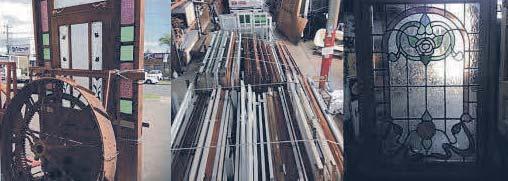






Mandy Nolan
Does a green future have cars in it?
Maybe. And, maybe not. Well at least, maybe not as many.
When it comes to sustainability, we have to admit that one of the big drivers of climate change causing emissions is us. Drivers. Particularly those of us still in cars wedded to the fossil fuel industry.
The automotive industry is a major driver of biodiversity loss and desertification. And it’s not just on the road crunching the kms, cars consume energy before they even hit the road. Glass, steel, rubber, plastic, paint and batteries contribute to the footprint of even the most eco car before she’s ready to roll.
So how do we embrace sustainability and movement?
There’s two solutions that spring to mind. Electrify, and rethinking how we do car ownership.
Ok, take a breath. This is just an exercise. First of all, you need to close your eyes and say ‘I am not my car. My car is not an extension of my ego in the world. It is a means to get from A to B’.
How’d that go? For some people, the car is more. It’s freedom. But
is it? If we could get from A to B without the impost of personal ownership, without costly pink slips or greens slips and rego, speeding fines and parking limitations, wouldn’t that be freedom too?
Old school ride share
Like what if we shared cars? If we didn’t have to garage or service or upkeep vehicles. What if we just used what was available?
There’s lots of ride share services in busy, inner city areas now where parking is at a premium and public transport is so good it doesn’t make sense to own your own vehicle. GoGet and versions of that seem to have some traction, but I’ll admit it’s not like having your own car. You can’t leave your gym bag with your stinky shoes in there. And for regional dwellers, we’re nervous about the car in your street ever actually being in your street.
I didn’t own my first car until I was in my 30s. I walked everywhere. I lived in walking distance of the shop. I pushed my baby in a stroller, I lugged shopping, and occasionally, when it was raining, I thumbed a lift. That’s old school ride share. The other day a lovely woman stopped me and said, ‘I used to pick you up hitching with your two little girls. Its great to see

how well you are doing now.’ Yep. I have a car.
We’ve gone from owning one car per household to owning one car per legal driver. Car ownership has become a rite of passage for adulthood. Great for the automotive industry, but not great for the planet. Can we rethink how we use our vehicles? Can we go car free? At least one day per week? It makes a difference.
Earlier this year we bought an electric vehicle (EV). It’s our second car. I currently drive a 4-cylinder 4WD. But my husband and I decided that if we went electric we’d be able to choose to use it for shorter trips. It has a range of
around 400k, less when you are on the open road. Most EVs use braking to top up battery charge and get more range. Another disadvantage for us regional folk who spend a lot of time on the open road. I mean, who would have thought peak hour could serve a purpose!
Thinking ahead
Having an EV has made us rethink how we move. And one of the key drivers when it comes to sustainability and making more environmentally-conscious decisions is around behaviour change. You have to think about where you are going. What time of day it is. What the traffic will be like. How far it is. Where the recharge

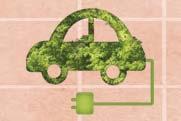

stations are. Sustainable thinking is around planning. It’s about understanding what it takes for you to get somewhere, and how much energy you use to get there.
Like many people we have solar, but we don’t have a battery, so we use the long charge in the day at home – because it’s free! And it’s not pulling from the grid. It’s enormously satisfying. You can check out your car’s charge status on your phone! I was in bed with my husband the other night and he whipped out his app to show me the charge status. He could actually turn it off from bed. It was truly arousing.
I sometimes imagine our carefree, car-free future. Self-driving, on demand, EVs. Walking and bike paths. Public transport.
Where one day someone asks ‘what’s a garage?’
People will laugh at the idea that we actually kept machines in specially built rooms in our homes. ‘You mean homeless people slept on the street while cars had a whole room? That’s crazy!’
Maybe the first step to transport sustainability is to start changing our thinking, instead of just starting our car.



The federal government provides a solar discount to hom owners and businesses in Australia that install a small scale renewable energy system (solar, wind or hydro) created is based on:
the amount of electricity consumption it reduces.
e ASK ABOUT THE NSW BATTERY REBATE AVAILABLE NOW!


Under the package, the federal government will pay around $350 per kilowatt towards cost of a solar system

Maxine and Daniel are considering a 5.28kW solar system, supplied and installed by ProSolar for $6,937. The federal government discount for this system is $1,938 (at time of publishing). This brings their system cost down to $4,999 saving them $1,850 per year enabling them to pay back their investment in 2.98 years!

This can be an attractive way to reduce your bill and put the money you would normally pay your power company into your very own power system on your rooftop.
THREE GREAT PACKAGES IF YOU MENTION THIS AD!
THR GR AT PACKAG THREE GREAT PACKAGES F YOU M NTION TH AD IF MENTION THIS AD!
ProSolar provides advice and guidance in a simple and easy way, to ensure you select the optimal solution for your home and budget. This is the best opportunity Northern Rivers families and business owners have ever had to generate our own power. For more information, call ProSolar on 02 7912 0760 or 0482 082 304.
ProSolar has designed three great packages to help you take advantage of the federal government discount.



6.6KW SOLAR SYSTEM
8.8KW SOLAR SYSTEM
The above prices include supply, installation (standard installation on a tin roof) and GST. The federal government discount is subject to change at anytime.
Aiden Grandsimon
With the Australian federal election imminent, voters are being inundated by the usual flood of photos showcasing campaign stunts – smiling politicians holding babies and wearing high-vis vests –galvanising a certain amount of our collective focus. Whilst this pre-election drama fills the newscycle, the real world policy implications are always serious and could lead to dramatically different outcomes. On April 6, Prime Minister Anthony Albanese alongside Minister for Climate Change and Energy, Chris Bowen, revealed Labor’s recent energy policy. The policy
The program consists of a $2.3 billion subsidy for solarpowered home batteries to store more efficiently the country’s current solar capacity. Based on analysis by the Department of Climate Change, Energy, the Environment and Water, this rebate could save a household with existing rooftop solar $1,100 from their yearly power bill, and


$2,300 for houses installing a new solar and battery system (ALP, 2025).
If Labor retains power, this rebate scheme will be introduced from July 1, 2025 and would be offered via the existing small-scale renewable energy scheme.
The case for
According to the Clean Energy Council’s General Manager, Con Hristodoulidis, this policy would help households overcome one of the principal limitations with home batteries, which is their cost.

‘The upfront cost of purchasing a battery averages around AU$14,000 and has been a barrier to entry for many homeowners who want to generate even further savings on their energy bills. Our data shows that less than five per cent of households with rooftop solar panels currently invest in battery storage,’ said Hristodoulidis (Heynes, 2025).
The opposition
The current critique and opposition to this policy is defining the
program as essentially a ‘regressive tax’ that would, as the name suggests, disproportionately negatively impact lower income households.
National Director of Energy at St Vincent de Paul, Gavin Dufty, said this about Labor’s proposal: ‘Renters and people in apartments who won’t be able to get these assets might end up underwriting home owners or home purchasers who have got wealth.’
He then continued, ‘Most people without solar, you’re
probably paying in green schemes and other stuff about ten percent of your bill.’ (Mercer, 2025).
Liberal party leader, Peter Dutton, also remarked : ‘I think you’re talking about higher income families being in a position to pay for that. I just don’t know that the next-door neighbour who can’t afford to pay for that battery is going to subsidise the battery for me, or for you, on higher incomes.’
(Heynes, 2025).

The supply and demand model that is taught in every high school economic class defines certain clear things. One of them is that, if demand decreases and supply either stays the same or increases, prices fall.
Combining this with the ‘duck curve’, which tracks the energy consumption from households over a regular day, we can understand why a Labor spokeswoman can confidently claim ‘the scheme aims to bring down power prices across the board by reducing demand for electricity at peak times in the evening when power prices spike as solar leaves the system.’ (Mercer, 2025).
It is difficult to argue that allowing stored solar power, that has been accumulated across the day when demand for power is low, to be used in the evenings when the demand is high, would not, at least somewhat, decrease energy prices.

We recently saved local businesses thousands with a water audit revealing hidden leaks. Dripping taps can waste 12,000L per year and a leaking toilet more than 96,000L potentially costing thousands.
water meter can help stop you wasting water and money.

Scan to learn more about our sustainable water program



Rous offers free water education programs for schools and community groups giving you the knowledge you need to be more water wise and create a more sustainable future for the region.
Visit our water treatment facilities for a guided tour, make the most of our educational resources and engage with our interactive catchment model trailer. Contact our sustainability team to discover more ways to learn.
Scan to learn more about our education program




Aslan Shand
There is no denying that trees have a significant role to play in the future of sustainability, but so does the role of managing, developing, and planning how trees are utilised for carbon capture, the environment, construction and other timber-based industries.
A significant issue for NSW has been the decisions around the effective management of native forest logging alongside sustainable plantations to meet the wide range of needs in the community. Trees and logging supply timber and jobs alongside the needs of the environment both in relation to maintaining adequate native forests to support other species as well as the long-term, environmental health of the planet.
The NSW Forestry Commission claims that it is it provides a vital source of timber for local industries and jobs, supports regional economies, and helps manage and maintain the health and biodiversity of state forests. However, according to the NSW Independent Pricing and Regulatory Tribunal (IPART) in its triennial analysis and report of
the government-owned logging company Forestry Corporation of NSW, in 2024 the NSW ‘native logging industry is not “economically viable” and the state government should consider shutting it down after 2028 if its prospects do not improve,’ reported the ABC after they gained access to the report through freedom of information laws.
The question is how effectively can timber production be moved from native forest logging to plantation timber, and what is required to achieve this?
According to ecologist Dailan Pugh ‘log yields from native forests have declined by around 80 per cent over the past 20 years, and will continue to do so’.
‘The 1.7 million hectares of Australian plantations currently provide 90 per cent of Australia’s sawlog production, with most coming from pine plantations. Hardwood plantations already provide about 40 per cent of hardwood sawlogs. Some 87 per cent of the logs removed from the 0.68 million ha of hardwood plantations are exported as woodchips, so there is plenty of scope to continue to increase
Natural Building & Design
Green e Building offers natural building and design services with ecological regenerative, sustainable and off grid options for anyone in the Northern Rivers.
We believe there is nothing more sustainable than using natural and recycled materials.
Green e Building can design and build your new dream home, sustainably renovate your current home or work with you to add extra rooms and extensions.

the production of sawn timber from existing plantations. When combined with increased domestic manufacturing of engineered timber products it is apparent that it is easy to complete the transition to plantations,’ he said.
Time and planning
One of the biggest challenges of the timber industry is time – while to some degree growing timber is a matter of ‘plant seed and water’ at the end of the day it takes time to grow trees, at least 30 to 40 years to produce sawn timber – therefore long-term planning is key.



Most commercial plantations have been aimed at short rotation crops (<15 years) for woodchips, however Mr Pugh has highlighted that this is changing with Australian Carbon Credit Units (ACCUs) being earned for longer rotations, resulting in increases in sawn products.
‘Given that the sale of sawlogs obtained from public native forests does not even cover the cost of cutting the trees down and transporting them to the mill, ending logging of public forests will remove this subsidy and make growing trees more profitable. When combined with ACCUs it will be increasingly profitable to grow trees,’ said Mr Pugh.
Sustainable plantations
‘If the aim is to establish ecologically sustainable plantings there are some basic requirements: only planting on cleared land, preparing a property management plan to identify areas suitable for timber plantings, excluding commercial plantings from wide buffers around creeks and wetlands, steep slopes, and other sensitive areas, planting a variety of local species from
local genetic stock, and applying selective harvesting.’
Mechanisation, efficiency and the introduction of more manufactured timber products has seen a continuing drop in the number of jobs, with employment in the NSW forestry sector falling from 23,792 in 2006 to 15,800 in 2021, which equates to a loss of 7,992 jobs over 15 years. Currently around 1,000 jobs are now reliant on logging public native forests.
‘Ideally, a good farm forestry plan should include areas planted for environmental purposes, including providing habitat, enhancing linkages to facilitate animal movements, restoring broad stream buffers, and protecting steep and erodible slopes,’ explained Mr Pugh.
‘Rather than competing with large-scale industrial plantations, for small-scale growers it would be best to focus on speciality timbers to supply niche markets. In this region speciality rainforest timbers offer good long-term prospects. The group Subtropical Farm Forestry have been facilitating plantings for years.’

David Lowe
Akubra was in the news last year when the iconic Australian hat company was bought by Andrew ‘Twiggy’ Forrest and his ex-wife Nicola. But some important facts went missing in the media hoopla. What makes Akubras so great is the rabbit fur felt. You need 12 rabbits to make an average hat, more for a bigger one like the Sombrero popularised by ‘bush tucker man’ Les Hiddins.
As the hat company expanded, and travelled from its origins in Tasmania to Sydney and then Kempsey, introduced rabbits were also spreading in plague proportions, so it made sense to turn them into something useful. During the Great Depression, rabbits kept many families alive. After myxomatosis was introduced in 1950, and then calicivirus in 1996, Australian rabbit populations crashed, which meant Akubra had to start sourcing pelts from overseas. The last time they made any data publicly available, in 2014, all their rabbits were being farmed and ‘processed’ in places like France, Ukraine and Belgium, countries with even worse animal welfare laws than Australia.
Making matters worse, only the soft belly fur of the rabbits is suitable for making hats.
Up rode the squatter
My association with Akubra started in 1986, when my sister gave me a lovely charcoal grey Squatter. This is a remarkable, somewhat obscure style of hat, light but firm, cool in summer and warm in winter.
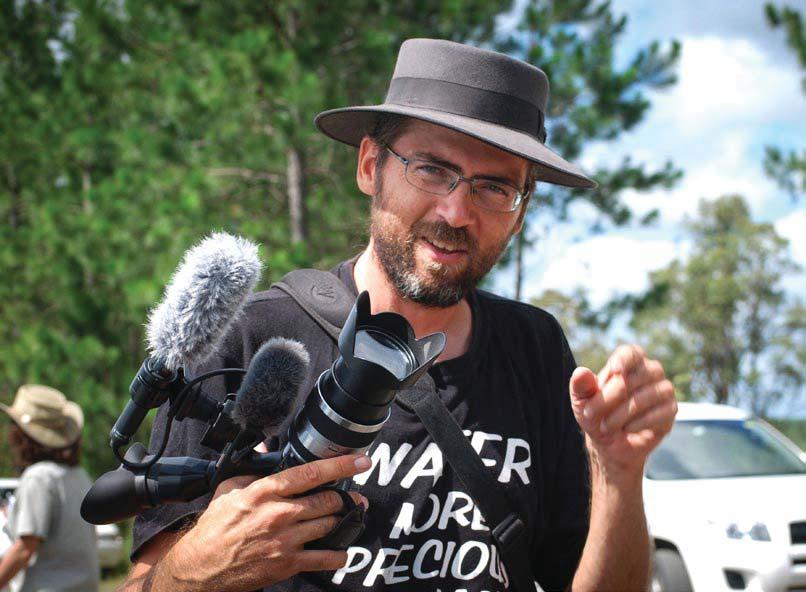
The hat is uniquely shaped to its owner’s personality, initially with steam, and then less intentionally via whatever happens next. After a few years, it gets too saggy and holey to be useful except as a stage prop, then you need to buy another one.
I’ve had a series of them. Once I had a black Squatter, which was somehow too black, and another time a brown one. I wasn’t too sad when I accidentally left that hat on top of a car.
Occasionally, the company has tried to lure the likes of Gina Rinehart by making red and blue versions.
You can’t just walk into a shop and buy a Squatter, even from the shop closest to the Akubra factory. You
need to order it, well in advance. These things are custom made, by hand, and they’re not cheap. With so much invested in the hat, it’s not surprising that many Squatter wearers become lifelong adherents. When I became a vegan, I kept wearing these hats, long after I’d ditched the cheese, leather shoes, wallet and belt. After decades, the Squatter was woven into my identity, and become a blind spot, even though I knew how they were made.
Then and now
In the past, almost everyone wore a hat in Australia, long before

anyone had heard of skin cancer or vegans. If you went out of the house without a hat, then you weren’t properly dressed. Akubra became a behemoth as they supplied thousands of slouch hats to the Australian Army (they still have the contract). That’s an awful lot of rabbits.
When fashions changed, fictional characters like the Man from Snowy River and Crocodile Dundee kept Akubra alive, with the iconic hats even featuring in the opening ceremony of the 2000 Sydney Olympics. Somehow, Akubra and Australia had become the same thing.
Invasive pests weren’t all they had in common. The two legends had somehow melded.
Now, people who don’t like being confronted by their own hypocrisy in the mirror can choose from a growing range of vegan headwear alternatives, including cork, woven palm, hemp, artificial felt products, and hats made from mycelium.
Next time you’re looking for a hat, check out the cruelty-free, sustainable alternatives.
If I can ditch the bunny Akubra, anyone can!










Ballina Shire Council’s Climate Change Policy sets more ambitious targets than the NSW and Australian Governments to achieve rapid emissions reduction by: reducing our operational greenhouse gas emissions to net-zero emissions by 2030 using 100% renewable electricity for our operations by 2030 see
ballina.nsw.gov.au/climate-change-action




Jo Immig
People have become cynical about the idea of sustainability, and often use the term with ironic air quotes. It’s understandable since it’s become the go-to word to greenwash everything from cleaning products to dodgy government development approvals. Its original meaning has long been abused and lost, and we need to reclaim it.
Given the enormity of the challenges faced today though, it’s not enough to just aim for sustainability anymore, we need to repair the enormous damage done and create regenerative lives if we have any hope of returning to sustainability.
Reclaiming sustainability
Ecologists have used the term sustainability for decades and its meaning is deeply embedded in nature. It is the capacity of ecosystems to maintain their essential functions and processes over the long term, ensuring the resilience and health of the natural environment to meet the needs of current and future generations, of all beings.
It wasn’t until the United Nations World Commission on
Environment and Development published the Brundtland Report in 1987 that terms like ‘sustainable development’ and ‘sustainable economic growth’ came into common use. And that’s when the rot set in.
Sustainability came to mean a three-way trade-off between the environment, society and the economy. It was as if making decisions from the place where those three circles overlapped would somehow magically result in sustainability. After decades of applying the three-pillar approach, it’s demonstrably not working in any sphere.
Why doesn’t it work? The global economy has become dangerously disconnected from both the social and bio-physical worlds. While the economy ultimately needs the resources of nature, nature sure doesn’t need the global economy.
The linear produce-consumedispose economy blows a gaping hole in the planet’s capacity to sustain itself. With the dominant economic paradigm of maximising growth, profits and GDP, we keep on consuming resources and causing environmental degradation. It’s like a cancer that eventually kills the host.
It disconnects us from our fundamental nature, leaving us vulnerable to ideas like transhumanism, whereby we think we can ‘transcend’ our biological realities. The disconnection makes
“Regenerative practices create systems where resources are repaired and reused, and waste is designed out, creating self-sustaining and regenerative cycles.
us blind to the rights of other beings to even exist on the planet.
We’ve already shot well past the point of ecological sustainability since we are using resources faster than they can be replenished, causing depletion and pollution. The social and economic impacts of this overshoot are becoming more evident by the minute.
There is such inequality in the world that billions of us still don’t even have the basic needs – of food, shelter, and clean water – being met. Meanwhile, in developed economies, the goalposts keep changing with rapid technological developments and
new ‘needs’ just keep accelerating. Meeting the needs of current generations is difficult enough within this paradigm, let alone thinking about the future generations, or other species, as we gobble up the earth. Something has got to give.
The re-generation
Inspired by nature, regenerative ways of being give us enormous potential to create a net positive environment. If we engage with the world holistically and realise its interconnected systems, working with them, not against them, we stand a collective chance.
In ecological terms, regenerative refers to processes that restore and revitalise ecosystems, improving their health and resilience beyond just maintaining the status quo. We need to reverse environmental degradation to improve the overall system.
The same ideas can be applied to human ecosystems. Regenerative principles can be applied across all sectors and disciplines from design and architecture to agriculture. It needs systems approaches such as life cycle assessment and cradleto-cradle design. These ideas aren’t new. We already know how
to do them, but somehow, they got swept away in the tsunami of hyper-consumerism.
Regenerative agriculture is already well established and occurring in different parts of the world. Even here in the Northern Rivers Byron Shire Council is providing Regenerative Agriculture Grants. It’s a great start. We just need to scale up, and fast.
Focusing on enhancing and restoring soil health, biodiversity, and ecosystem functions through agriculture also brings opportunities for renewed community connections, local economies, and food system fairness for all beings.
Regenerative practices create systems where resources are repaired and reused and waste is designed out, creating selfsustaining and regenerative cycles. With this kind of thinking we can get off the highway to hell and start creating mosaics of regeneration to seed the earth with this way of being and hopefully become sustainable one day.
■ Jo Immig is a former NSW government advisor and Coordinator of the National Toxics Network. She’s currently a freelance writer and researcher.


Dr Sian Grigg
All this talk of hope and engagement is great. A necessary shift from physics to the hard realities of human behaviour, and the equally hard fact that to spur action individually and collectively you need to harness the power of hope. Barack Obama knew it, as did Jesus. This isn’t anything new! But it is kind of new in the climate science community. It feels like a concession to the woo woo. Even if it’s necessary, people who’ve spent their professional lives checking and verifying and calculating and attempting to remove biases from their thinking have a hard time peddling false hope. It’s a bit of a philosophical question, but given that all hope involves betting on the future in a world made up of interconnected, complex, dynamical systems, the future is inherently uncertain, and all hope could arguably be false hope. Just how false is a question of the uncertainty involved in the climate model predictions. Climate scientists have made great efforts to calculate probabilities and error margins to accurately show the degree of certainty of any prediction (like for the weather forecast). Quantifying uncertainty is an effort to quantify hope (for a


sunny weekend for example). At the moment no-one is willing to state the odds of us reaching net zero by 2050, but we do know that if we reach this target it gives us a 50 per cent chance of maintaining warming at 1.5°C in the medium term. The uncertainty in the social, political, and economic systems determining emissions in the next 25 years is huge. This uncertainty is a good thing, in the sense that hope has a large part to play in the outcome. The solutions exist to reach our target of net zero by 2050. That we know. Hope is justified, but needs maintaining.
The cycle of hope
What can we do to foster hope in the face of such uncertainty? So we are inspired to take action, which then spurs more hope, more action and so on? Hope requires encouragement and proof of progress. Positive news is important – shouting out the achievements and clearly stating the progress that has been made. Australia is on track to reduce emissions by 42 per cent from 2005 levels by 2030. This is good news. Investment in solar and wind has grown exponentially in the last ten years. Also good news. What happens, however, if we tackle emissions, flatten the curve,




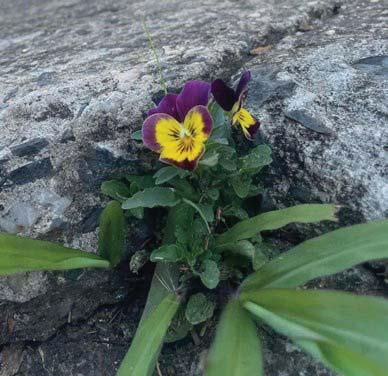
start to get on top of the situation, but not sufficiently quickly to stop the wild weather?
There is an amount of warming already in the system. If emissions stop instantly temperatures would also level out pretty quickly. But this means temperatures stay stable, at the level they are at when net zero is reached. We don’t go back down to pre-industrial levels. By the time we reach net zero we will be at higher temperatures and have more crazy weather. It then takes much longer for temperatures to fall back to pre-industrial levels once greenhouse gases and aerosol emissions have reached zero. So the generation that makes the changes (between now and 2050) is not the generation that will see the results (more like 2075-2100 and beyond).



I am not sure this is politically tenable. The Great Barrier Reef could still be bleached out of existence, heat waves will increase as will the wild weather, already stressed ecosystems may tip over the edge. The AMOC (Atlantic Meridional Overturning Circulation – the ocean currents currently keeping northern Europe warmer than Alaska) may slow and collapse (which is irreversible). These are not good outcomes, and don’t encourage further hope and action. Like someone whose arteries are blocked with cholesterol, even if they start with healthier eating and a new exercise routine they may not avoid the worst outcome without a bypass operation. The bypass operation provides a solid fix, and buys them time to make the changes that will lead to a healthier future.
Is a bypass operation possible for the Earth? Is it possible to buy some time and what might that look like? The word is geo-engineering, and it has bad press. It is about as appealing as going in for a triple bypass. No-one wants it. But if it significantly increases the odds of a healthy planet post op? What might we be able to do at a local level, a regional level,








Be brave, stay positive, find your tribe: three climate activists explain how to get started (The Guardian: https:// tinyurl.com/4fehpnb7)
or even a global level to lower temperatures and calm the wild weather while we are reducing greenhouse gas emissions and improving the planet’s general health? At some point a politician, pushed by societal suffering, will ask that question. And scientists must be ready with an answer. In the meantime, get involved and let’s try to collectively avoid the triple bypass. Join the fight!





Time is of the essence...





















The time to speak up, act up and protest is now. We are in a climate crisis!